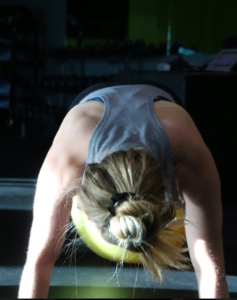
Running Economy Defined
Heavy strength training and plyometrics will have a major impact on your efficiency as a runner. This efficiency will allow you to improve your speed and endurance and is known as your running economy. Fortunately, there are many ways to improve your running economy (i.e. efficiency) both in and out of the gym.
Impact of Heavy Strength
In the gym, heavy strength and plyometric training are going to have the greatest impact on your running economy. Heavy strength training can be defined as lifting multiple loads in ranges of 3-6 reps. The key thing to keep in mind here is that you must be working HARD to get the last few reps in. By doing this, you are increasing your absolute strength and lowering your relative intensity (Fletcher et. al. 2017). In other words, if your max running speed is 7 km/ hr, running at 6 km/ hr is going to be pretty difficult. But if you increase your max speed to 10 km/ hr, that 6 km/hr speed isn’t so difficult.
Furthermore, when we get stronger, we shift to using more slow twitch fibres compared to fast twitch fibres (Fletcher et al. 2017). Since fast twitch fibres use much more energy (1.5 – 2x more) compared to slow twitch fibres, using a greater proportion of slow twitch fibres will save us more energy, thus improving our running economy.
Powerful Plyometrics
The other extremely powerful method of training to improve your running economy is though plyometric training. This includes exercises that involve skipping, hopping and jumping such as vertical jumps, broad jumps and box jumps. This type of training, in a way, gives you free energy. This free energy comes from an increase in tendon stiffness. Tendons are structures that attach muscle bone, and stiffness refers to the ability for the tendon to “snap back”. Similar to a new and well used elastic band, a new one will “snap back” with much greater force than an old one.
Muscle Contractions and Energy
When our muscle contracts and changes length, it uses energy (i.e. concentric and eccentric contractions). An example of this would be a bicep curl (concentric) or slowing lowering yourself down after a chin up (eccentric). However, when a muscle contracts without changing length, the energy cost is much lower (isometric contraction). An example of this would be a plank (your muscles are working but not moving). Therefore, the less our muscles change length, the more efficient that movement is. The great thing about tendons is that they take care of the length change in muscle contractions. When the tendon changes length instead of the muscle, you can perform concentric and eccentric contractions using much less energy (Fletcher et. al 2015). This lower energy cost increases our running economy (i.e. efficiency).
Optimized Tendons
However, not all muscles have the same amount of attached tendon and some can not be optimized for efficiency this way. The muscles with the most tendons are in the back of the legs (hamstrings and calves). Therefore, being able to optimize these muscles can significantly improve your running economy. For example, one study done comparing high level runners and recreational runners demonstrated the importance of the triceps surae muslce (calf) muscle. They showed that this muscle used only 25% of the energy cost in well trained runners. In comparison, the triceps surae accounted for 40% of the energy cost in lower trained runners. This lower energy cost in well trained runners is at least in part due to a “stiffer” tendon (i.e. better snap back). Tendon stiffness is most notably improved through plyometric training.
Final Takeaways
If you are taking up running for the first time in your life, simply getting out on the road or the treadmill is going to be the best way to improve your speed and endurance. However, if you have any history of running, sport participation or are just a generally active person, your ability to improve your speed and endurance will be accelerated with the addition of heavy strength and plyometric training. More specifically, the strategies detailed above are ideal for those runners who have a history of running but have reached a plateau in their training. For those runners, the best thing they can do is re-evaluate their current weekly intensity distribution and begin specific strength training to improve their efficiency and overall performance. When beginning a new strength program, it’s ideal to begin with endurance strength, but quickly transition to heavier weights.
Amanda Regnier
Running Coach, MSc. Strength and Conditioning, C.S.C.S
Movement Specialist (FRC®)